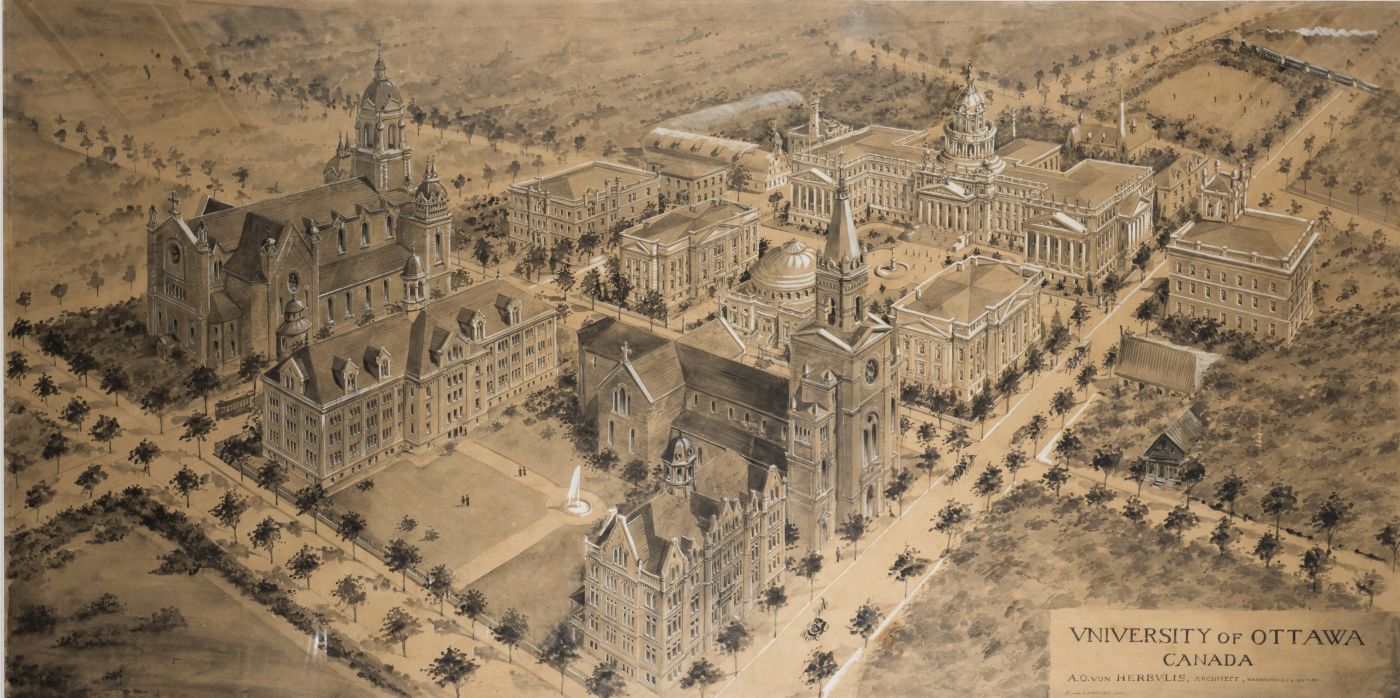The University of Ottawa occupies a good portion of the Sandy Hill area. In 1856, barely eight years after it was established, the university’s predecessor, the College of Bytown, leaves its Lowertown quarters. It settles into a new building located between Wilbrod Street and Theodore Street (now Laurier Avenue). Other buildings are added over the years as the Oblates, who operate the establishment, take the initiative to create an ensemble which will soon become the pride of the capital. Father Jean-Charles Laframboise, OMI, describes the impression made by the “College” of Ottawa when he enters the establishment in September 1918:
The buildings of the “College” are imposing: main building (facing Wilbrod St.) with three wings, a chapel, an academic hall; Science building (1896) with laboratories and a museum; new Archville scholasticate built in 1885, new Juniorat du Sacré-Cœur built in 1895. Magnificent ensemble complemented by St. Joseph’s and Sacré-Cœur churches.1
Sandy Hill densifies as the university develops, with the École normale leading the way in 1923. The School of Nursing follows in 1933, and several other components are added during the post-war years. Each attracts its share of professors. Many people settle in the neighbourhood, which is particularly appreciated by lawyers, doctors, journalists, scholars and other members of the Francophone intelligentsia.
The part of the neighbourhood occupied by the university is further transformed between 1960 and 1980 when the institution experiences considerable growth. The University Centre, the main library, a sports field, several new wings and three student residences are added. Several houses in the neighbourhood are expropriated and demolished to make room for the expansion. Others are subdivided and rented to the thousands of students who flock to the neighbourhood. Cafés and bars open on Laurier Street. Sandy Hill now marches to the beat of the campus: the start of the academic year, initiations, exam periods, end of term, wild parties, and holidays.
1 Jean-Charles Laframboise, “Les Oblats et l’Université d’Ottawa: du ‘Collège’ à l’Université (1918-1950),” Sessions d’étude - Société canadienne d'histoire de l'Église catholique, vol. 44, 1977, p. 82-83 (translated from the original).
